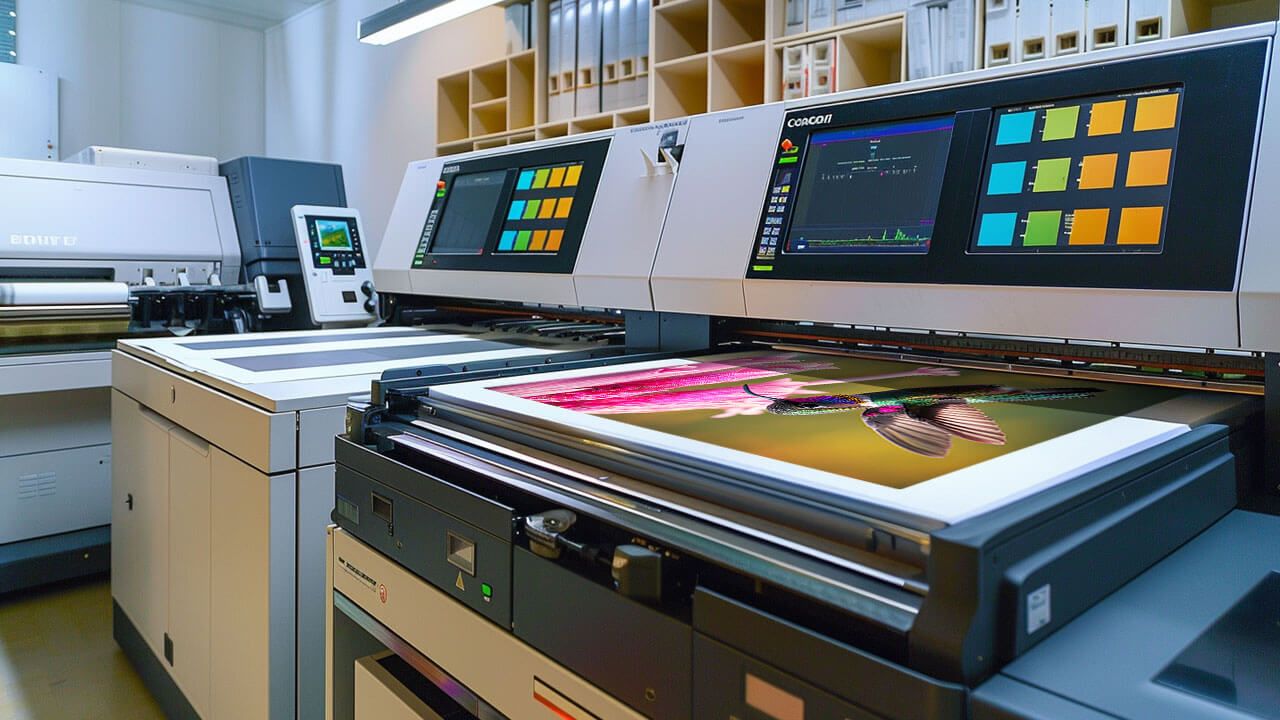In recent years, the world of printing has undergone significant transformations, and at the heart of this change lies decentralized printing systems. As a marketing professional, understanding the dynamics of these systems can provide a competitive edge in crafting innovative campaigns and solutions. But what exactly are decentralized printing systems, and how do they impact the printing industry and marketing strategies?

Understanding Decentralized Printing Systems
So, what are decentralized printing systems? In essence, these systems distribute the printing workload across multiple locations or devices rather than relying on a single centralized setup. This approach contrasts sharply with traditional centralized printing, where a single, often large, printer handles all tasks. The decentralized approach offers flexibility, scalability, and often significant cost reductions.
Why Decentralize?
The primary reason for adopting decentralized printing systems is the flexibility they offer. By distributing printing tasks, businesses can reduce bottlenecks and improve efficiency. Moreover, these systems are often more scalable, allowing organizations to adapt quickly to changing demands.
Benefits of Decentralized Printing in Marketing
For marketing professionals, decentralized printing systems bring several advantages. Firstly, they enable faster turnaround times, essential for timely campaigns. Secondly, the reduction in costs allows for more resources to be allocated to other aspects of marketing strategies. Lastly, decentralized systems can support personalized marketing efforts, tailoring materials to specific audiences with ease.
Technological Innovations Driving Decentralization
The rise of 3D printing technologies has been a significant driver of decentralization in the printing industry. As noted in a recent study, advancements in 3D printing have made it more accessible and affordable, facilitating its integration into decentralized systems. Similarly, innovations in laser printing technology have enhanced the precision and speed of printing processes, making them suitable for decentralized setups.
Role of Software in Decentralization
Software solutions play a crucial role in managing decentralized printing systems. These software platforms enable seamless communication between various printing devices, ensuring that tasks are distributed efficiently. Many of these platforms are cloud-based, allowing for easy access and management from anywhere, further enhancing the flexibility of decentralized systems.
Challenges and Considerations
While the benefits of decentralized printing systems are clear, there are challenges to consider. Managing multiple devices can be complex, requiring robust software solutions and IT support. Additionally, ensuring consistent quality across different locations can be challenging, necessitating regular calibration and maintenance of equipment.
Overcoming Security Concerns
Security is a significant consideration in decentralized systems. With data being transmitted across multiple devices and locations, ensuring the protection of sensitive information is crucial. Implementing strong encryption protocols and regularly updating software are essential steps in maintaining security.
Practical Applications in Various Industries
Decentralized printing systems are being adopted across various industries. In healthcare, they facilitate the rapid production of customized medical devices. In manufacturing, they support 3D printing applications for prototyping and production. The publishing industry is also seeing changes, with decentralized systems allowing for more localized and personalized print media.
Impact on the Future of Publishing
The future of the publishing industry is being shaped by decentralized printing systems. With the ability to print on demand and localize content, publishers can offer more personalized experiences to readers. This trend aligns with the broader shift towards digital and biodegradable materials, further emphasizing the importance of sustainability.
Integrating Augmented Reality with Decentralized Systems
An exciting development is the integration of augmented reality (AR) with decentralized printing systems. By embedding AR elements into printed materials, businesses can create interactive and engaging experiences for consumers. This approach is particularly effective in marketing, where capturing attention and driving engagement are paramount.
Case Study: AR in Print Media
A notable example of integrating AR with print media is seen in a recent campaign by a leading fashion brand. By using AR-enabled tags, customers could view 3D models of products, enhancing the shopping experience. This successful campaign highlights the potential of combining AR and decentralized printing systems in marketing.
The Environmental Impact of Decentralized Systems
Environmental sustainability is a growing concern in the printing industry. Decentralized printing systems contribute to reducing waste by minimizing overproduction and enabling more efficient use of resources. Moreover, the shift towards biodegradable printing materials further supports sustainability goals.
Reducing Carbon Footprint
By localizing production, decentralized systems can significantly reduce the carbon footprint associated with transportation and logistics. This approach aligns with broader industry trends towards sustainability and environmental responsibility.
Conclusion: Embracing the Future of Printing
As we look to the future, decentralized printing systems represent a significant shift in how we approach printing. For marketing professionals, understanding and leveraging these systems can lead to more effective, efficient, and environmentally friendly campaigns. By staying informed about technological advancements and industry trends, businesses can position themselves at the forefront of this exciting evolution in printing technology.

FAQ Section
What are the main benefits of decentralized printing systems?
Decentralized printing systems offer flexibility, cost reduction, and scalability. They allow for faster turnaround times and support personalized marketing efforts, making them ideal for dynamic business environments.
How do decentralized printing systems impact sustainability?
These systems contribute to sustainability by reducing waste and minimizing the carbon footprint associated with transportation and logistics. The integration of biodegradable materials further supports environmental goals.
What industries benefit most from decentralized printing?
Industries such as healthcare, manufacturing, and publishing are seeing significant benefits from decentralized printing systems. These systems enable rapid prototyping, personalized production, and localized content, aligning with industry demands.
This article contains affiliate links. We may earn a commission at no extra cost to you.






